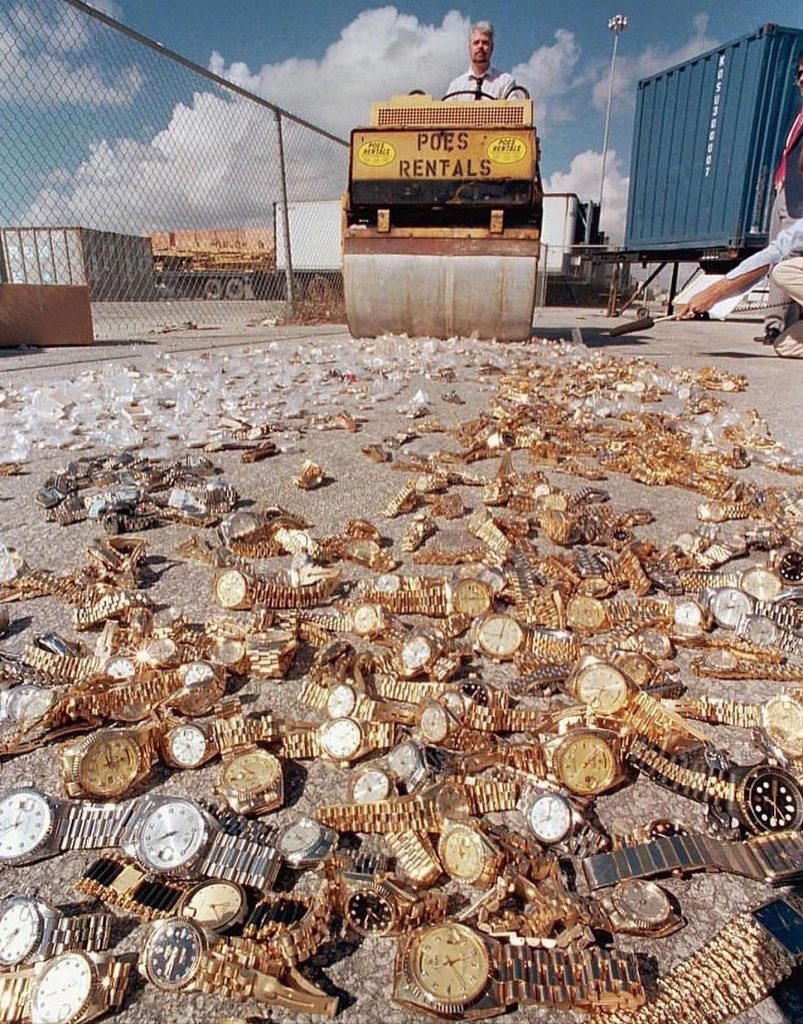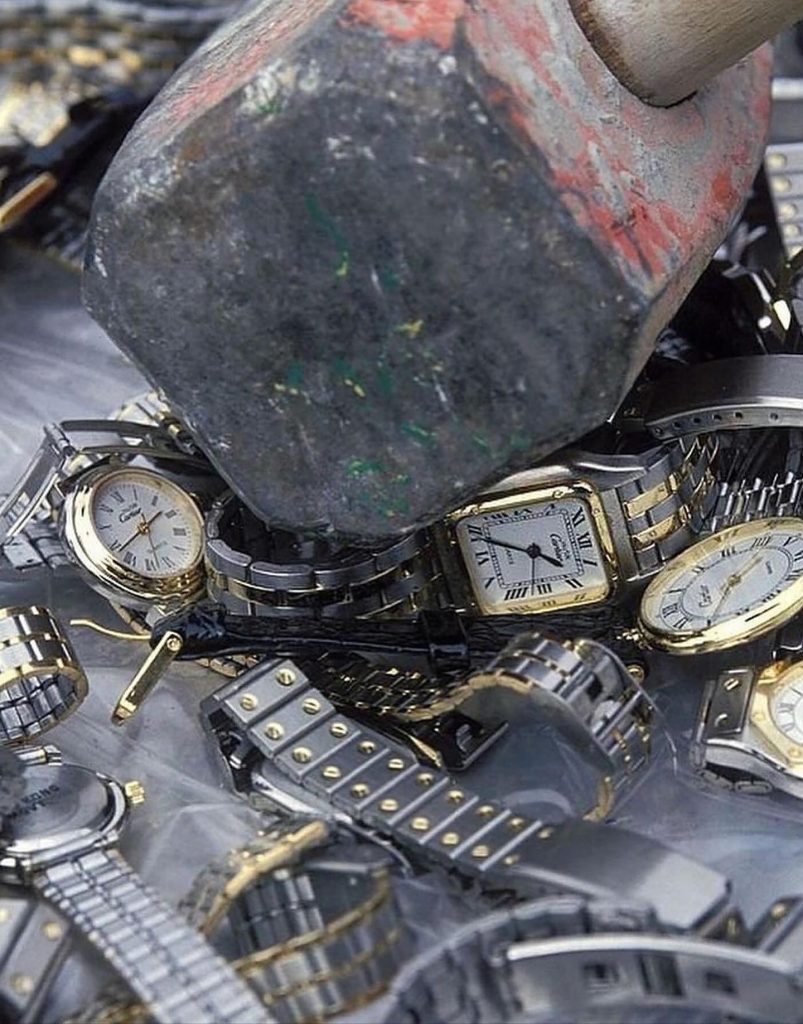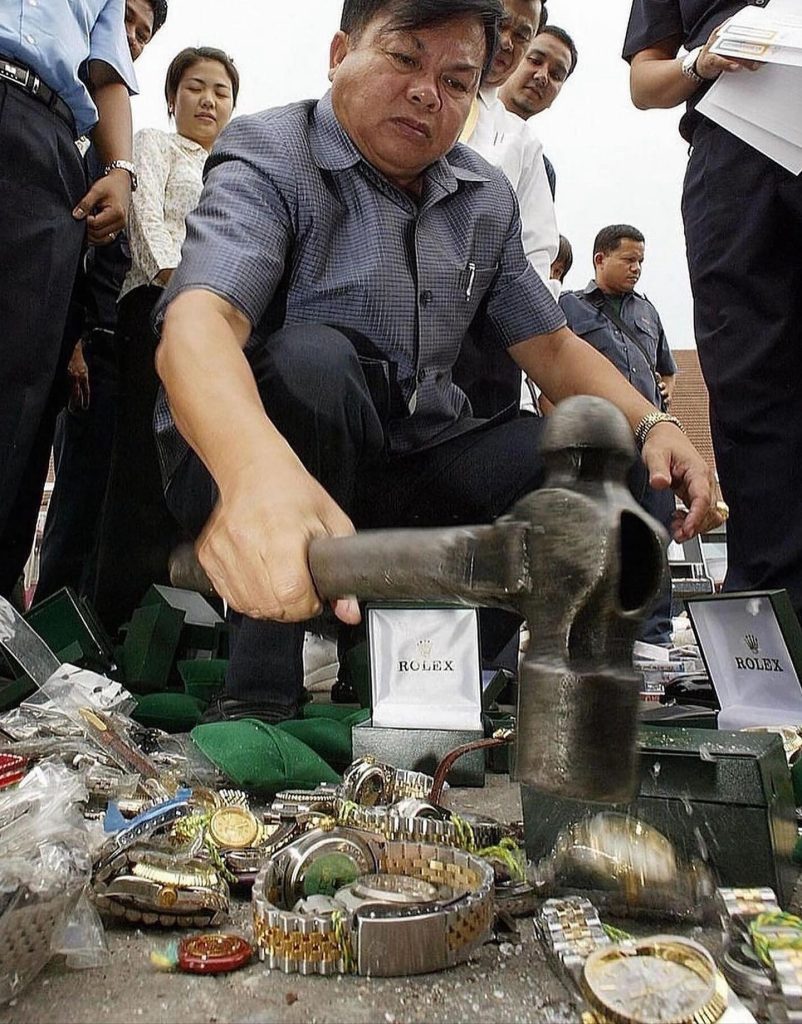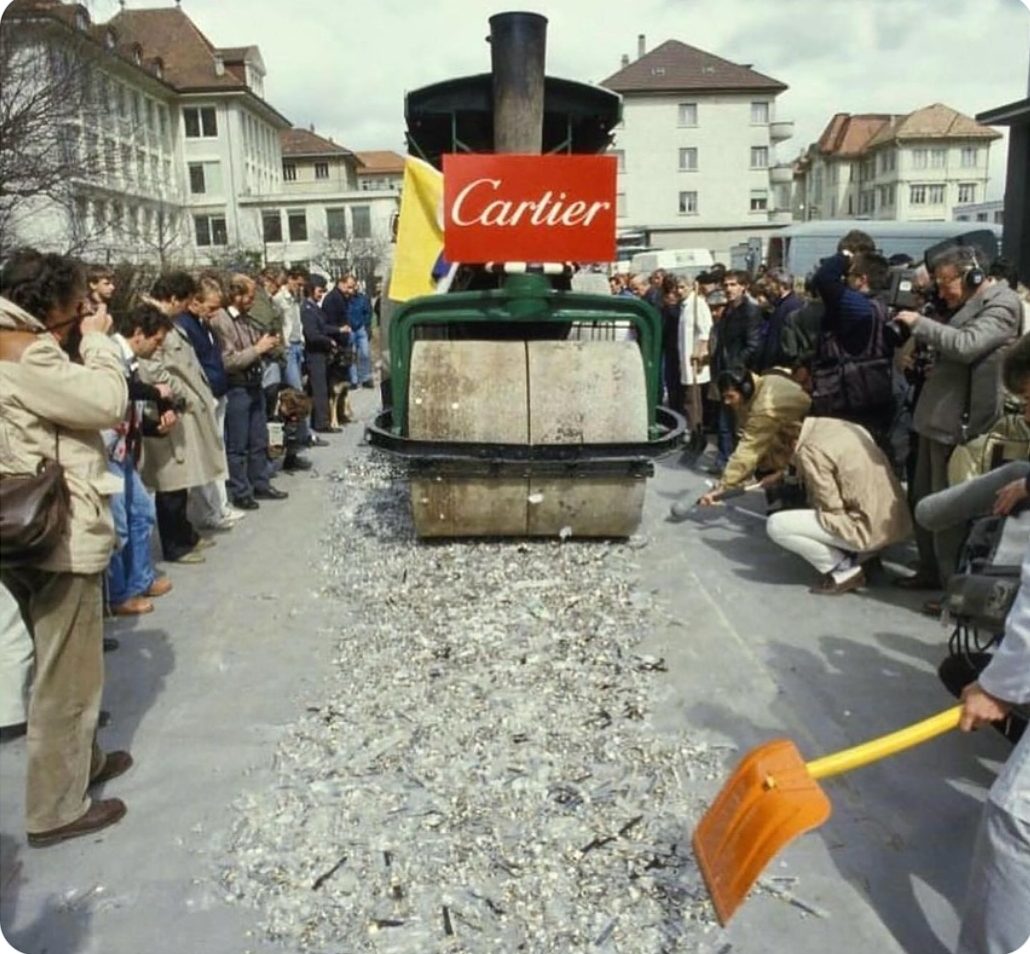How Cartier Used a Steamroller to Crush Thousands of Counterfeit Watches in Spectacular Public Events in 1985 and 1986

I remember the first time I stumbled upon news of Cartier destroying its knockoffs under a steamroller—it felt surreal. In 1985, the prestigious jeweler didn’t fight fakes quietly in court. Instead, they threw down the gauntlet in the most dramatic way possible: 8,000 counterfeit watches were laid out on the pavement in La Chaux-de-Fonds, Switzerland, and crushed under a steamroller. Seeing a luxury watch flattened alongside factory gates wasn’t just powerful; it was unforgettable.
A year later, Cartier took that message across oceans. On July 22, 1986, in full view of the media, the chairman himself rolled out a steamroller on Fifth Avenue in New York City. He drove it over piles of imitation Cartier watches that had been confiscated by customs—2,000 of them, to be precise. It was a bold, visual statement: Cartier would not tolerate fake merchandise tarnishing its legacy.

I love stories where brands literally stand up with their name on the line. Cartier’s actions back then were more than just publicity. At the time, counterfeit watches were inundating global markets—lawsuits alone weren’t enough to stop the tide. Citizens might buy a cheap knockoff for a few dollars, but it undermined trust in craftsmanship that took generations to build.
The 1985 event happened in what’s often called the watchmaking capital. The combination of local authenticity and public drama made the act even more meaningful. Image archives from that day—photos of the steamroller crushing box after box of fake watches—still circulate online today.

Fast forward to 1986 in New York, and it felt like Cartier wanted to deliver a lesson directly to the heart of the world’s busiest luxury scene. The chairman’s own hands steering the steamroller turned the spectacle into more than mere brand protection—it became theatre, purpose, and protest. Suddenly, protecting heritage became something everyone saw, not just lawyers and executives.
Looking back, it’s a reminder that in the battle over authenticity, actions can carry more weight than any fine print. Cartier’s legacy, known since the 19th century for crafting jewels for kings and a timeless watchmaking tradition, wasn’t just in its factories. It was in the message that only one, perfect name stands on its work—and the rest can lie flat under a steamroller.

Daniel Reed is a curious mind with a passion for breaking down how the world works. With a background in mechanical engineering and digital media, he turns complex ideas into easy-to-understand articles that entertain and inform. From vintage tools and modern tech to viral internet debates and life hacks, Daniel is always on the hunt for the “why” behind the everyday. His goal is simple: make learning feel like scrolling through your favorite feed — addictive, surprising, and fun.
